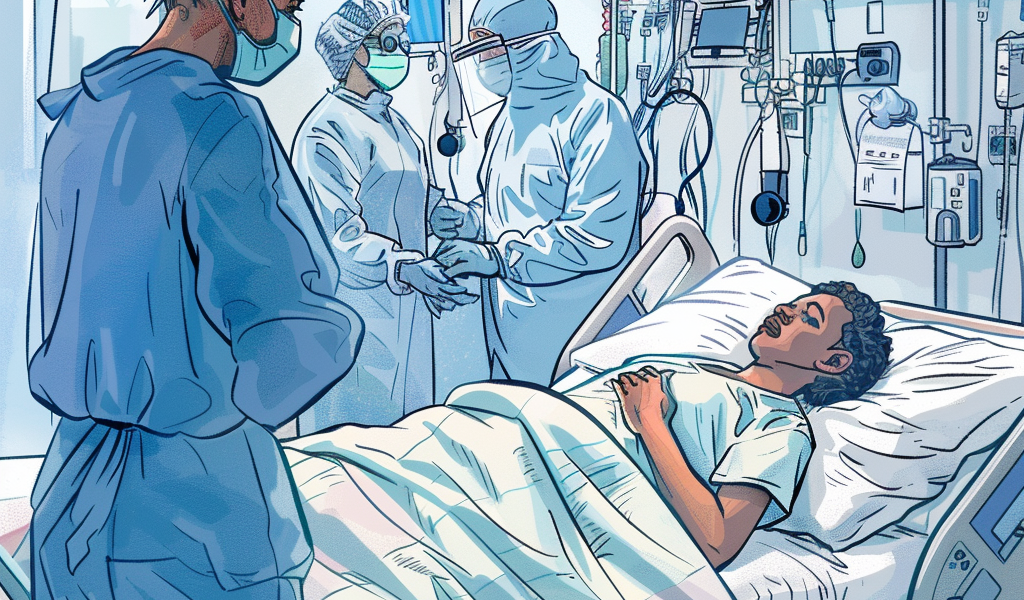In a recent report released by the Centers for Disease Control and Prevention (CDC), alarming statistics have emerged regarding the rise of antimicrobial-resistant infections in hospitals. The data highlights that rates of seven specific hospital-onset infections have remained significantly elevated, with a 20% increase in 2022 compared to pre-pandemic levels in 2019. This trend has raised concerns among infectious disease professionals, prompting calls for increased federal funding to combat the growing threat of antibiotic resistance.
The CDC’s fact sheet, published last week, provides a detailed analysis of hospital-onset infection rates from 2019 to 2022. The findings reveal that six out of the seven infections studied were more prevalent in 2022 than they were in 2019, with only hospital-onset methicillin-resistant Staphylococcus aureus (MRSA) showing stable rates. The most concerning statistic is the nearly five-fold increase in reported clinical cases of Candida auris, a multidrug-resistant fungus, from 2019 to 2022.
The report indicates that the peak of these infections occurred in 2021, but the overall rates have not returned to pre-pandemic levels, remaining 20% higher in 2022. The CDC attributes this rise in antimicrobial resistance to several factors related to the COVID-19 pandemic. The strain placed on healthcare facilities, health departments, and communities led to longer hospital stays for patients, challenges in implementing infection prevention measures, and an increase in inappropriate antibiotic use.
While five of the seven infection rates were statistically similar from 2021 to 2022, the significant rise in Candida auris cases and the decrease in hospital-onset MRSA highlight the shifting landscape of hospital-acquired infections. Antibiotic-resistant infections pose a severe challenge for healthcare providers, as they are often harder to treat and can lead to worse patient outcomes. The spread of these infections within hospitals is facilitated by the high use of antibiotics and the compromised health of patients.
The Society for Healthcare Epidemiology of America has responded to the CDC’s findings by criticizing a recent appropriations bill passed by the House, which proposes a 20% cut to the CDC’s funding for fiscal year 2025. The society argues that reduced funding would hinder efforts to address the rising rates of antimicrobial resistance and infection control in healthcare settings.
In response to the pandemic, the CDC allocated funds authorized by the American Rescue Plan Act to over 9,000 healthcare facilities to bolster infection control and antibiotic stewardship initiatives. These funds were aimed at supporting hospitals in their fight against the surge of hospital-acquired infections during the pandemic.
As the healthcare community grapples with the implications of these findings, the need for robust federal investment in public health initiatives, particularly those focused on combating antibiotic resistance, has never been more critical. The ongoing rise in hospital-acquired infections underscores the importance of continued vigilance and proactive measures in infection prevention and control.
Healthcare providers are urged to enhance their antibiotic stewardship programs, emphasizing the responsible use of antibiotics to mitigate the development of resistant strains. This includes educating healthcare workers on best practices and implementing strict infection control protocols to safeguard patients.
The CDC’s report serves as a stark reminder of the challenges that lie ahead in the battle against antimicrobial resistance. With the potential for increased morbidity and mortality associated with these infections, the healthcare community must unite to advocate for policies that prioritize funding for infection prevention and control efforts.
As the situation develops, stakeholders in the healthcare sector must remain informed and engaged in discussions surrounding funding allocations and public health strategies aimed at curbing the rise of antibiotic-resistant infections. The health and safety of patients depend on the collective efforts to address this pressing issue.





